Election posters through the years
On Wednesday 22 November 2023, elections for the House of Representatives will be held in the Netherlands. A typical by-product of elections are the posters many parties distribute. Election posters are about as old as universal suffrage: since the start of the twentieth century, political parties have been using this visual medium to try and convince voters to vote for their party. Although the use of posters has declined significantly in recent decades, they remain an indispensable part of campaigning. The Documentation Centre for Dutch Political Parties ( DNPP ) has long been collecting those posters and has now built up a collection of over 4,500 posters, from almost 100 different political parties. All posters have been digitized and are freely accessible in the DNPP repository .
This overview offers insight into our collection. The posters illustrate a number of important developments in Dutch politics over the years. For instance, we see the shift from segregated, ideological politics to more personalized forms of politics, in which individual politicians and lead candidates play a more important role. Some posters give a good impression of a party’s identity, while others reveal consistent themes and strategies that are used to win votes.
Posters
Change
In 2002, green left-wing party GroenLinks campaigned with a series of posters on which pictures of recognizable situations were marked with a red marker indicating what they wanted to change in our country. An original but very effective way of making your views clear through posters.
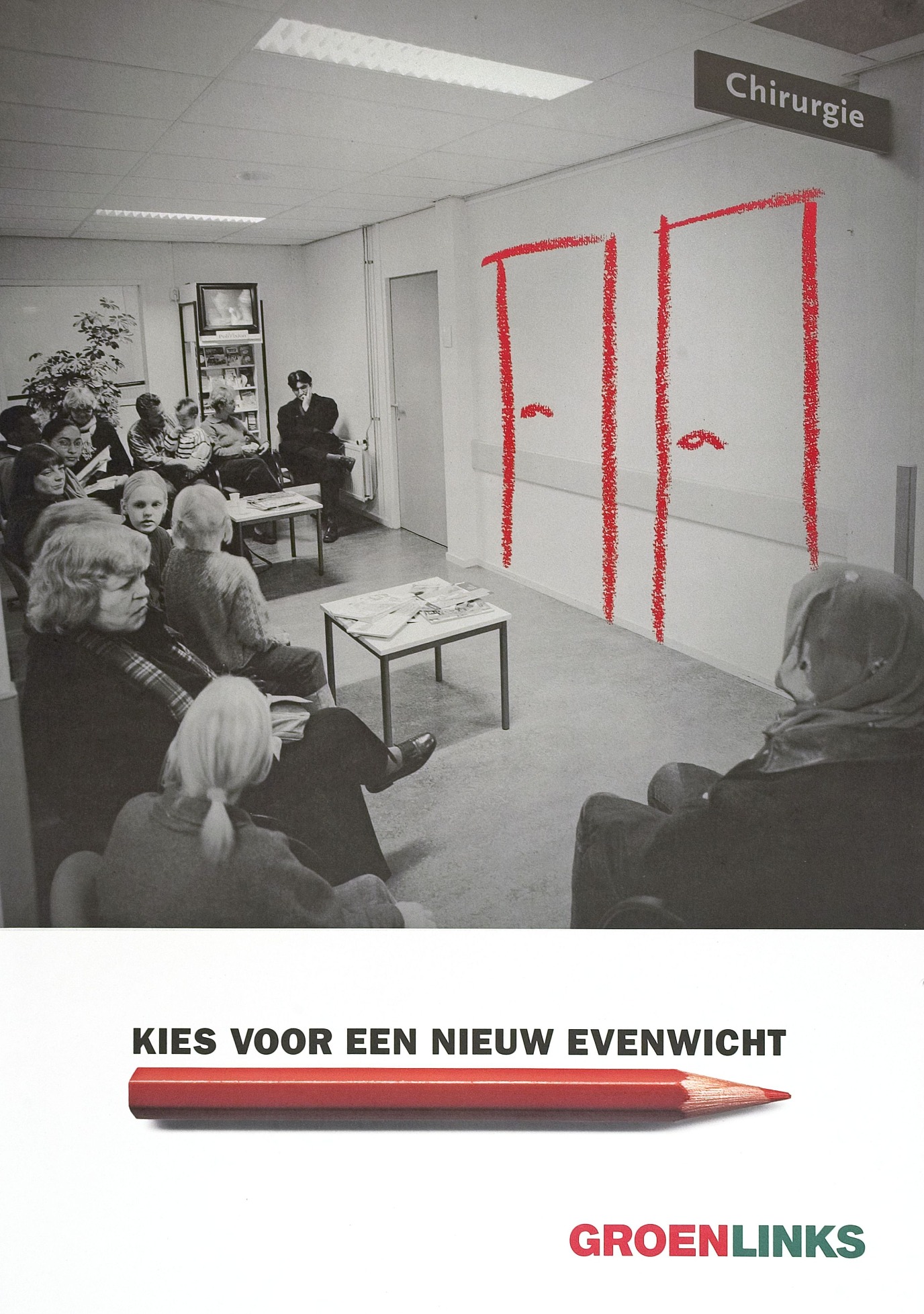
Less taxes
If ever there has been a party that believes we all pay too much tax, it is the VVD (People’s Party for Freedom and Democracy). Yet it has been a very long time since they advertised this on posters as explicitly as in the 1950s, when several posters on this subject, drawn by well-known cartoonist Eddy Samson, were circulated.
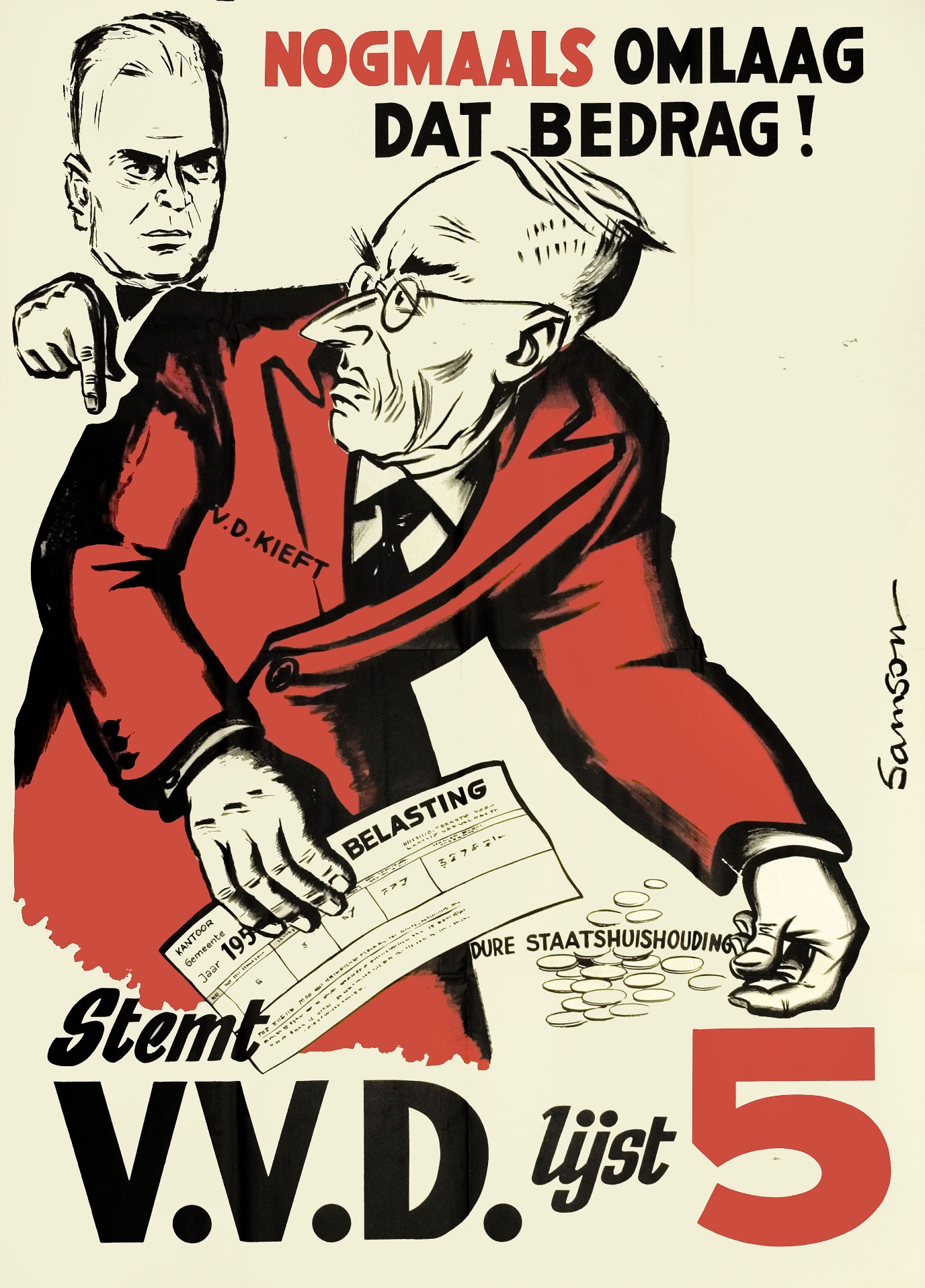
Sex
The Free Sex Party: it almost sounds like a joke, but this party actually existed and participated in the 1970 municipal council elections in Amsterdam. It was sponsored by the, at that time illegal, porn magazine Candy. It earned Candy many new subscribers and one may wonder if it was not ultimately an advertising stunt after all.
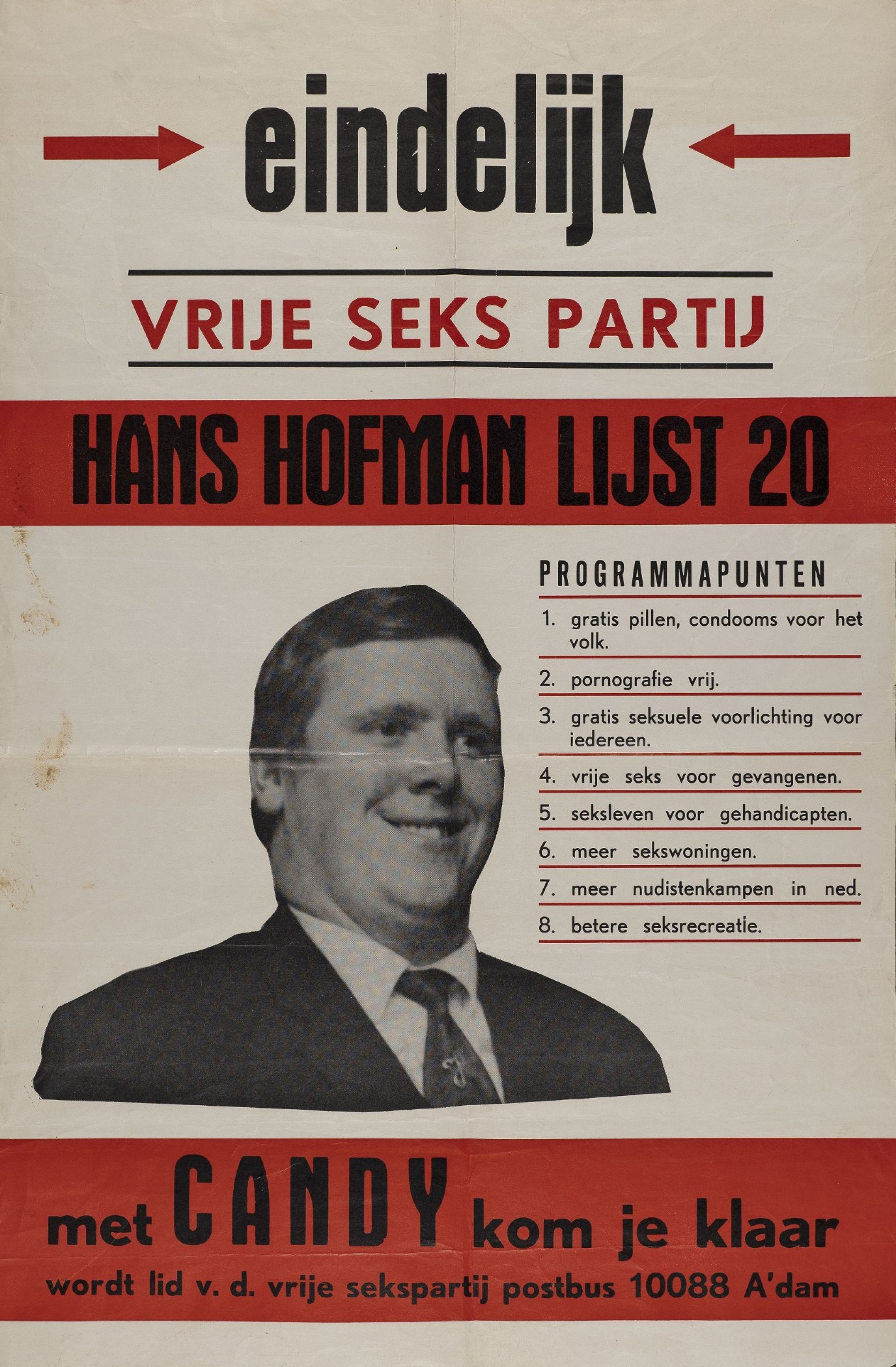
The Dutch tricolour
Nationalist expressions are traditionally mainly seen in right-wing and Christian parties in the Netherlands. This is also true of the Boerenpartij (Farmers Party), which was active from 1958 to 1981 and was considered the right wing of our country at the time. However, these farmers did not yet hang our flag upside down.
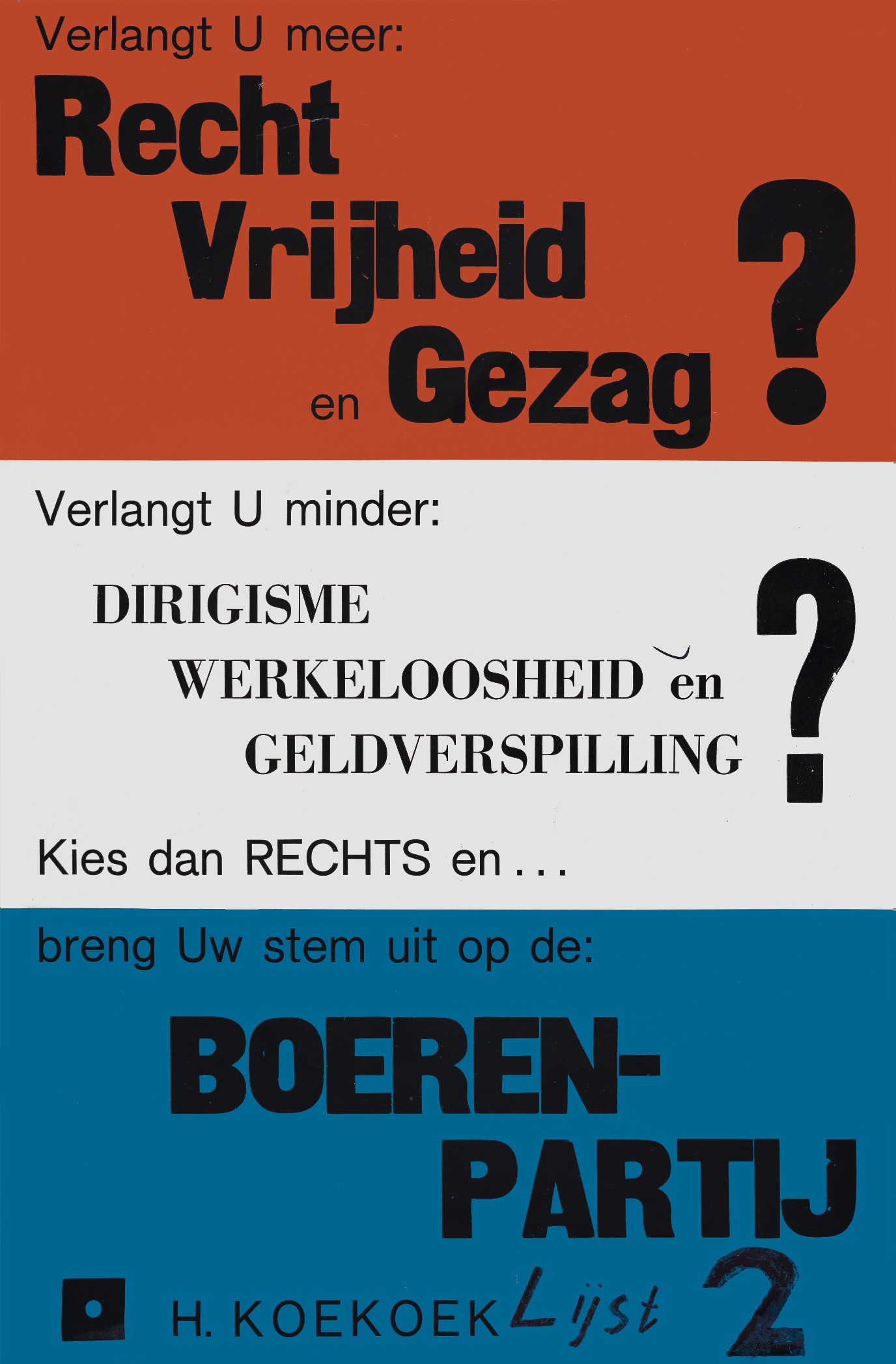
Children are endearing
Movies and pictures of cuddly children are widely used in advertising to promote products or attract attention. Political parties too, have made use of this. Initially, these were progressive parties, such as the PvdA (the Dutch Labour Party) in 1953. Ultimately, children also represent the future. In recent decades, Christian parties in particular, with their emphasis on family, have portrayed children on posters.
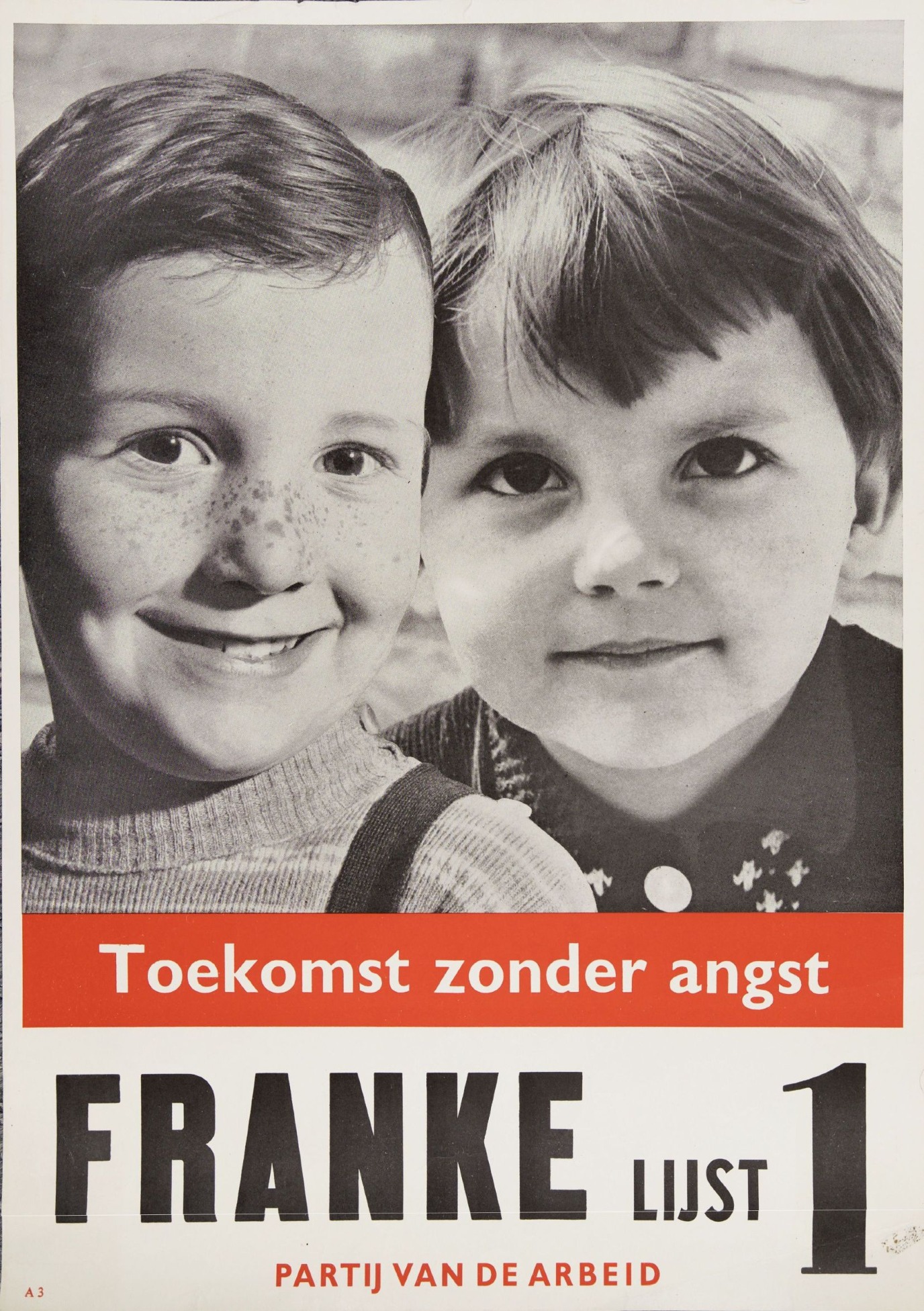
Lead candidates portrayed
A frequently used method in election posters is to portray the candidates. For a long time, these were the lead candidates of the parties who then appeared on the posters. In this context, it is perhaps surprising that Lilian Marijnissen could be seen on an election poster – decades before she became the lead candidate of the SP (Socialist Party) in 2017 – as a child sitting in the front bike seat of her father’s bicycle. Her father, Jan Marijnissen, was lead candidate of the SP in 1989.
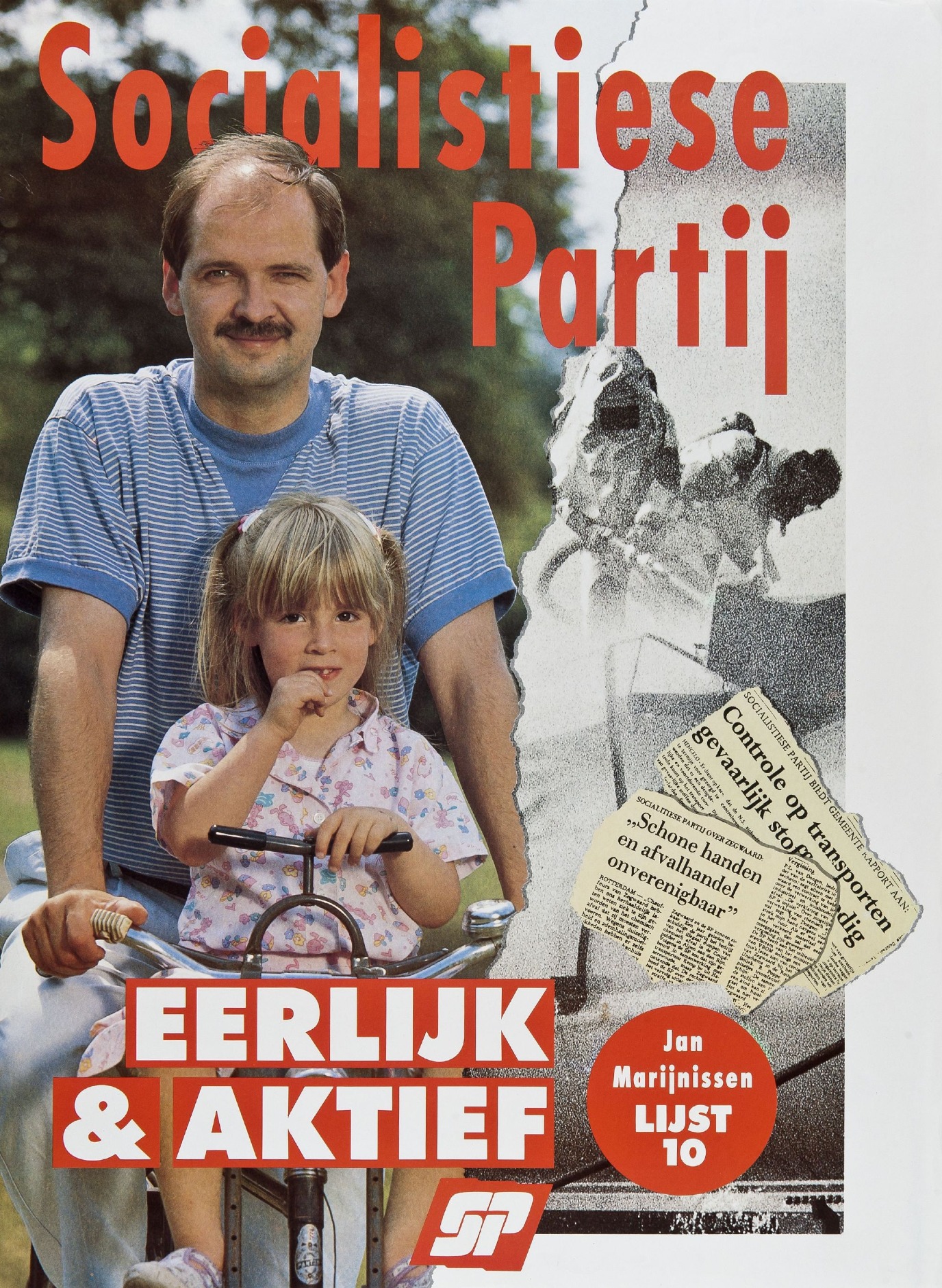
Opposing others
At times, it might be a better strategy not to say what you are for, but rather what you are against. This approach can already be observed on the oldest election posters of the DNPP collection: In 1918, The Bond van Vrije Liberalen (Union of Free Liberals) opposed Pieter Jelles Troelstra, the leader of the revolutionary socialists.

More information
For more information visit the website of DNPP.
More news
-
15 September 2025
Successful visit to the UG by Rector of Institut Teknologi Bandung
